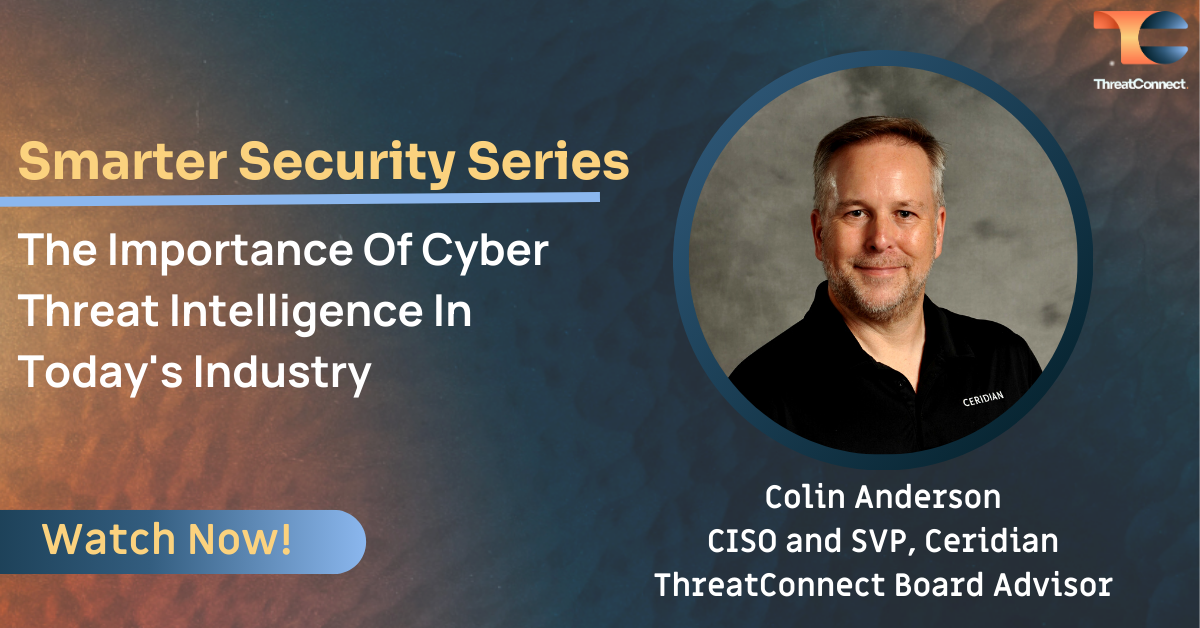Toby Bussa, Vice President of Product Marketing at ThreatConnect, recently sat down for a discussion about cyber threat intelligence with Colin Anderson. As a seasoned Cybersecurity Executive, Anderson, who has over 25 years of experience, is currently the Senior Vice President and CISO at Ceridian, a Human Resource Management software company.
In this conversation, Bussa digs deep into Anderson’s extensive background and knowledge, covering a wide range of security risk management topics. The main focus was on the evolutionary trajectory of Security Operation Centers (SOC). According to Bussa, SOCs have transitioned from the simple detection of threats to more complex strategies requiring modernization and the creation of Cyber Fusion Centers. He points to cyber threat intelligence as a primary component in this shift, positioning it to be an imperative aspect of security operation strategies.
Anderson couldn’t agree more, particularly emphasizing the need for a shift from a reactive to a proactive approach. He believes that cyber threat intelligence is essential in this transition, as it allows for scenario anticipation and more efficient response. This shift is facilitated by the integration of threat intelligence into security operation teams, which brings a context for understanding and responding to events before they occur.
Both Anderson and Bussa assert that the value of cyber threat intelligence extends beyond the confines of security operations, reaching various parts of the business, such as e-commerce teams and even marketing teams. It’s not just useful for security events; cyber threat intelligence can provide valuable insights, help avoid fraudulent activities, and advance a proactive business culture that anticipates and mitigates threats before they materialize.
However, as experienced as he is, Anderson does not deny the existence of bottlenecks that sometimes restrict the full value of cyber threat intelligence, citing the tendency for information to remain confined within SOCs. He encourages further exposure by celebrating wins and sharing how threat intelligence positively impacts the business. By increasing visibility and broader integration of threat intelligence services, businesses are armed with a powerful tool for protection against the rising tide of cyber threats.
In conclusion, embracing, infusing, and harnessing cyber threat intelligence across all areas of business is no longer an option but a necessity in today’s fast-paced, threat-laden digital world. Indeed, as Anderson succinctly put it – hope is not a strategy.

